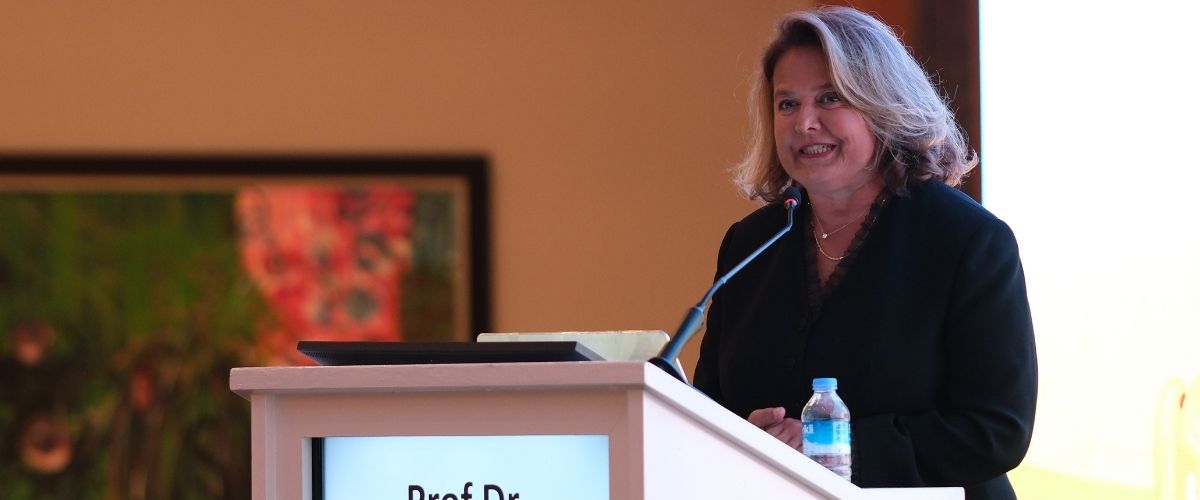The silent threat to children's dental health: Early childhood caries (ECC)
Altınbaş University Faculty of Dentistry Faculty Member, International Association of Pediatric Dentists (IAPD) and Turkish Pedodontics Association President Prof. Dr. Figen Seymen talked about early childhood caries (ECD).
Early childhood caries (ECC) is defined as a problem that is seen especially in children under the age of 6 and seriously threatens dental health. Prof. Dr. Figen Seymen stated that ECD manifests itself with tooth loss caused by decay or decay in the deciduous teeth. Stating that there are mild, moderate and severe degrees of ECD, Seymen pointed out that these caries can lead to chronic pain, infection and other health problems in children. Altınbaş University Faculty of Dentistry Faculty Member, International Association of Pediatric Dentists (IAPD) and Turkish Pedodontic Association President Prof. Dr. Figen Seymen emphasized that parents should pay attention to children's oral hygiene and eating habits. He stated that introducing children to the dentist at an early age will minimize the risk of caries.
“It affects more than 600 million children”
Prof. Dr. Seymen said that deciduous teeth are placeholders for permanent teeth and that decays in these teeth affect the general health of children. Pointing out that early childhood caries, which affects more than 600 million children worldwide, often remains untreated, Prof. Seymen emphasized that this situation reduces the quality of life of children and families and brings great costs to society. Stating that if ECD causes pain, it negatively affects children's chewing, social interaction, cognitive and neurological development, Seymen said that despite being preventable, these caries continue to affect many children.
What are the symptoms of these caries?
The first symptom of ECD is chalky white or brown spots on the gingival margin. Seymen explained that if these lesions are not treated, the decay can deepen and affect the entire tooth. He stated that the upper milk incisors are most frequently affected by this situation, while the lower front teeth are the least affected teeth due to the protective effect of saliva and tongue.
“Clean with a damp cloth after breastfeeding”
Pointing out that breast milk alone does not have a caries-causing effect, Seymen reminded that factors such as not cleaning teeth regularly and sugar consumption can trigger caries formation. Seymen recommended cleaning the teeth after breastfeeding with a damp gauze, finger brush or water.
3 methods to prevent cavities in 3 stages
Prof. Dr. Seymen from Altınbaş University noted that the baby should be examined by a dentist when the first tooth erupts or at the latest at 12 months of age. Seymen also mentioned the importance of starting tooth brushing with the eruption of the first tooth and summarized the evidence-based and globally agreed recommendations of the International Association of Paediatric Dentistry (IAPD) in the management of early childhood caries in 3 stages:
Primary prevention for ECCD
Seymen stated that the first step in the prevention of ECD is to support children's healthy oral and dental development and listed the things to be considered as follows:
- Limiting sugar intake: Free sugar consumption in food and beverages should be kept to a minimum in children under the age of two
- Avoid bottles and breastfeeding at night: Bottle use and night feeding should be stopped after 12 months, especially in children who are breastfed frequently or at night
- Optimal fluoride use: Children's teeth should be brushed regularly with an age-appropriate amount of toothpaste containing 1,000-1,500 ppm fluoride.
- Visit to the dentist: In the first year of life, take the child to the dentist for a comprehensive dental examination
- Fluoride varnish application: Children at high risk of caries should regularly apply 5% fluoride varnish
- Use of fissure sealants: Protective fissure sealants should be applied to sensitive molars
Secondary Prevention for ECO
After recognizing the symptoms of caries, he stated the following to be done to stop the progression:
- More frequent application of fluoride varnish: Apply fluoride varnish four times a year in children with white spot lesions
- Protective fissure sealants: Fissure sealant should be applied to molars without carious lesions
Tertiary Prevention for ECO
Seymen underlined that in order to minimize the effects of advanced caries, these 2 items should be considered:
- Use of silver diamine fluoride: It is an effective method to stop cavity lesions.
- Conservative caries removal: It is important to remove caries conservatively and restore teeth to prevent further tooth fractures, pain and unnecessary pulp exposure.



